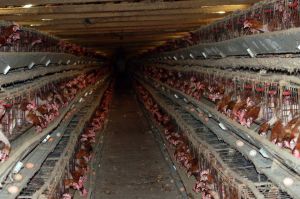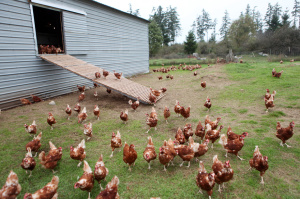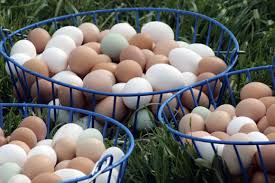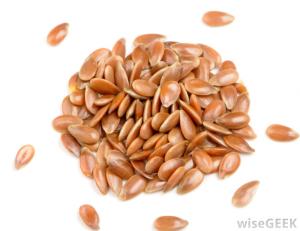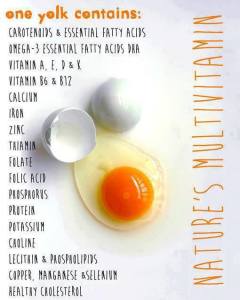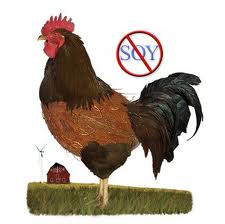We hear so many buzz words when it comes to eggs, like “Cage-Free”, “Free Range”, “Hormone Free”, “Organic”. What exactly do all these terms mean? And are they just marketing gibberish, or do they actually carry some weight? Lets find out.
The vast majority of egg-laying hens are confined in battery cages, known as Caged Hens. On average, each caged hen has less space than a single sheet of letter-sized paper on which to live her entire life. Unable even to spread their wings, caged laying hens are among the most intensively confined animals in agribusiness. Caged hens also suffer from the denial of many natural behaviors such as nesting, perching, and dust bathing, all important for hen welfare.
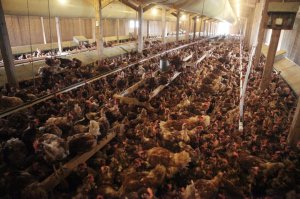 Then come the slightly luckier Cage Free Hens. They are not in cages but rather in floor systems usually in an open barn type of setup. The hens have bedding material such as pine shavings on the floor, and they are allowed perches and nest boxes in which to lay their eggs. However, they may still be at close quarters with may other hens … just not in cages.
Then come the slightly luckier Cage Free Hens. They are not in cages but rather in floor systems usually in an open barn type of setup. The hens have bedding material such as pine shavings on the floor, and they are allowed perches and nest boxes in which to lay their eggs. However, they may still be at close quarters with may other hens … just not in cages.
Cage Free hens are spared several severe cruelties that are inherent to battery cage systems. But it would nevertheless be a mistake to consider cage-free facilities to necessarily be “cruelty-free.” Here are some of the more typical sources of animal suffering associated with both types of egg production: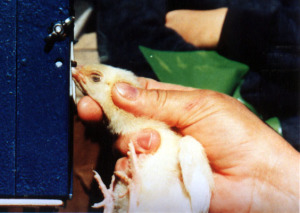
- Both systems typically buy their hens from hatcheries that kill the male chicks upon hatching.
- Both cage and cage-free hens have part of their beaks burned off, a painful mutilation.
- Both cage and cage-free hens are typically slaughtered at less than two years old, far less than half their normal lifespan. They are often transported long distances to slaughter plants with no food or water.
So, while cage-free does not necessarily mean cruelty-free, cage-free hens generally have significantly better lives than those confined in battery cages. The ability to lay their eggs in nests, run and spread their wings are tangible benefits that shouldn’t be underestimated.
However, there is NO GOVERNMENTAL REGULATION on the legal definition of “cage-free” when it comes to eggs. “Cage-free” means only that the birds are not in cages. Any producer can use the words “Cage free” as a descriptor for their hens/eggs without approval from any organisation of governmental body. So unless, you have seen your egg farm, there is no assurance you can rely on this “Cage-free” label.
NB: Caged hens/eggs can also be known as Barn, Barn Roaming or Aviary.
Ideally, you imagine Free Range hens roaming freely in a pasture, pecking for worms and basking in the sun. Unfortunately this is not the case. Mostly “free range” means that the hens that have the opportunity to go outside. Some may travel in and out of a barn at free will or while others may spend a fixed portion of their day roaming outdoors. The term “Free Range” like “Cage Free” is not currently regulated by the government, although there are some international third-party verification programs.
Humane Farm Animal Care operates a certification program specifying that laying hens are uncaged, with access to perches, nest boxes and dust-bathing areas. There are stocking-density maximums but outdoor access is not required. ; starvation to induce molting is prohibited.
These are laid from hens that may be kept in any kind of caging system, but generally are cage free. The hens don’t receive vaccines, antibiotics or other intrusive drugs, and their diets must be produced on land that has been free from use of toxic and persistent chemical pesticides and fertilizers for a specified period of time. GM crops are not permitted. Organic eggs can be certified organic by various organic certification bodies. (I will go into more detail about organic eggs in Thailand in my next article.)
Depending on which type of Organic certification the eggs have received, the production methods must comply with the Organic Certification Requirements of the relevant certififying body including requirements such as organic, vegetarian feed, no use of antibiotics and no cages.
All eggs contain small amounts of omega-3 fatty acids, thought to be beneficial to human health. Omega-3 levels in eggs can be raised by supplementing the birds’ diet with things such as fish oil, flax seed or alfalfa meal (or by simply allowing the birds to forage on lawn or pasture). Not surprisingly, the amount of omega-3s in an egg yolk can be increased by three to five times through supplementation of the hen’s diet with these supplements. Find out what supplements your egg farm is using to increase omega-3s in your eggs, and what the omega 3 content of their eggs actually is!
Hens’ diets are modified by adding ingredients such as alfalfa, rice bran and sea kelp to their feed, resulting in eggs with higher levels of nutrients such as B vitamins and vitamins A, D and E. Find out what supplements your egg farm is using to increase vitamins in your eggs, and what the vitamin content of their eggs actually is!
Antibiotic Free
Antibiotic-free claims on egg cartons can be only be made by egg producers who don’t use any antibiotics in feed or water during the growing period of pullets or while hens are laying eggs. Flocks producing certified organic eggs must be antibiotic free by regulation. So if you want to be sure they are antibiotic free, check for organic certification.
 Eggs from hens treated with antibiotics cannot be classified as antibiotic-free, but the eggs themselves do not contain antibiotic residues. Also, it is estimated that only a small percentage of laying flocks producing conventional eggs ever receive antibiotics due to use of effective vaccines and other management practices which minimize the need for antibiotics to treat illness. If any egg laying flock does receive an antibiotic, it is usually under the supervision of a veterinarian and only for a short period of time to treat a specific disease outbreak or for prevention of a recurring disease on that farm.
Eggs from hens treated with antibiotics cannot be classified as antibiotic-free, but the eggs themselves do not contain antibiotic residues. Also, it is estimated that only a small percentage of laying flocks producing conventional eggs ever receive antibiotics due to use of effective vaccines and other management practices which minimize the need for antibiotics to treat illness. If any egg laying flock does receive an antibiotic, it is usually under the supervision of a veterinarian and only for a short period of time to treat a specific disease outbreak or for prevention of a recurring disease on that farm.
Hormone Free
In the US, all egg laying hens are not allowed to be given hormones. Some egg cartons say that the eggs are hormone free; however, this is true for all eggs in commercial egg production in the United States. Not sure the case for other countries. If this claim is used on labels, it needs further clarification.
Vegetarian Eggs
Vegetarian eggs are laid from hens that are only fed a vegetarian diet — free from meat or fish by-products. Hens are kept in cages or indoors and do not peck any grubs or worms.
Pasteurized eggs are eggs in their shell that have been put through a pasteurization process where they are heated to 140 degrees Fahrenheit for three and a half minutes. Eggs are not required to be pasteurized. Pasteurization completely kills bacteria without cooking the egg.
Grade A Eggs
Eggs are graded based on their quality and appearance. Grade AA eggs have thick, firm whites and high, round yolks. Their shells are clean and unbroken. Grade A eggs are like Grade AA, but their whites are “reasonably” firm. Grade A eggs are usually sold in stores. Grade B eggs have thin whites and wider yolks. The shells are unbroken, but might show slight stains.
Eggs from hens that are fed soy-free diets. Soy-free eggs are possibly beneficial to those who are allergic to soy, although USDA experts say that there’s no evidence that any of soy’s allergenicity is carried over into the eggs.
Size
Extra large “0”, large “1” and medium “2” are the most common sizes sold, although size classifications range from jumbo down to small and peewee eggs. So whats the difference? A jumbo egg has nearly 8 grams of protein (and 90 calories) – about 50 percent more than the 5.3 grams of protein (and 63 calories) found in a medium egg, giving you more protein-rich nutrition for your buck. Plus, most recipes are based on large eggs, so if the recipe calls for many eggs, you may need to adjust the number of eggs used.
Low in Fat
Eggs are all relatively low in saturated fat. So while its a true statement, this applies too all eggs, organic, caged or soy free!
No Artificial Colouring…..I should bloody well hope not.
This is a useless descriptor as artificial colouring is not used in any egg production!
I hope that this egg dictionary will help you next time you go out shopping and want to decode an egg carton. Look out for Bangkok Greenie’s next article on Organic Eggs in Thailand.
*Credit to various sources on the Internet for images.


